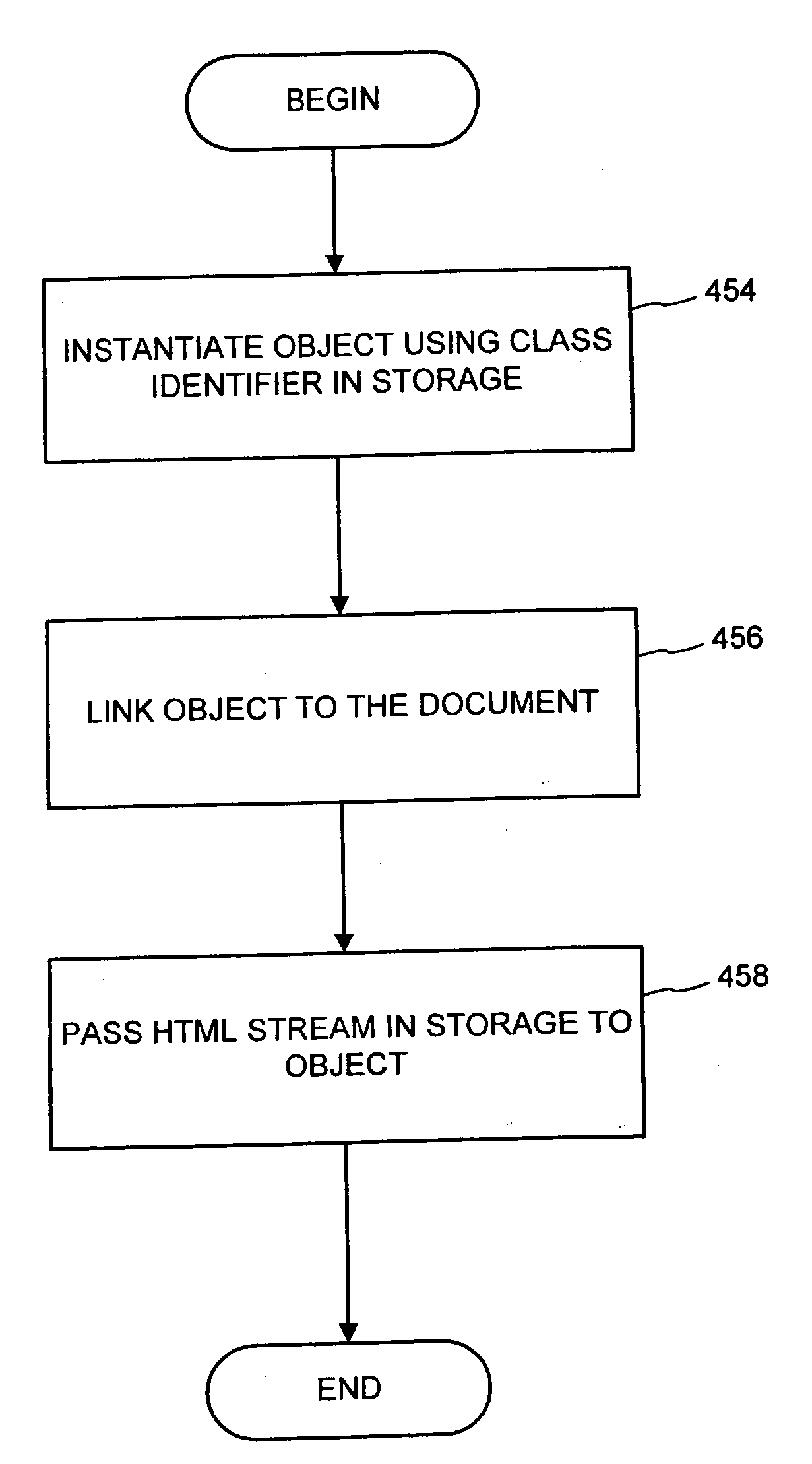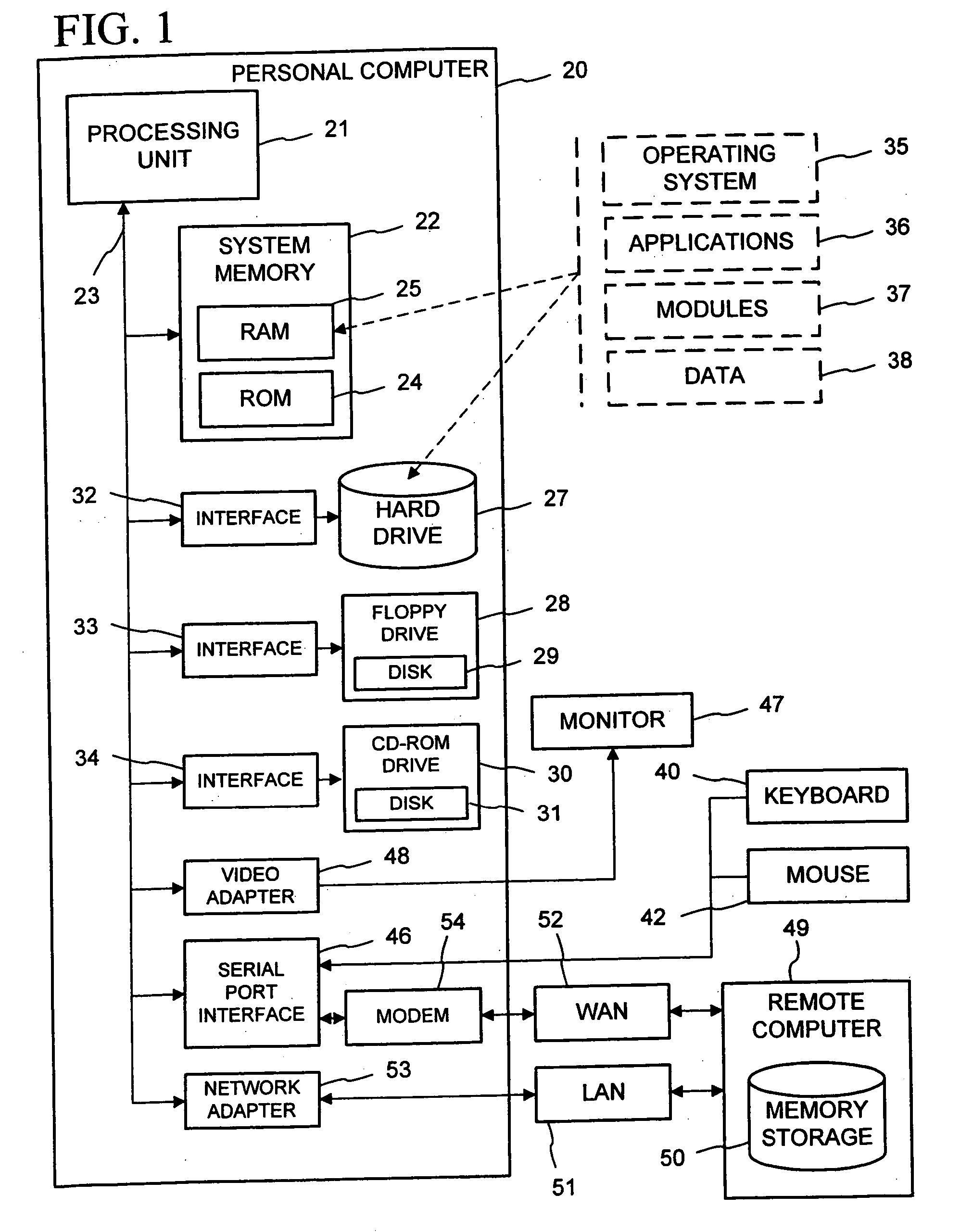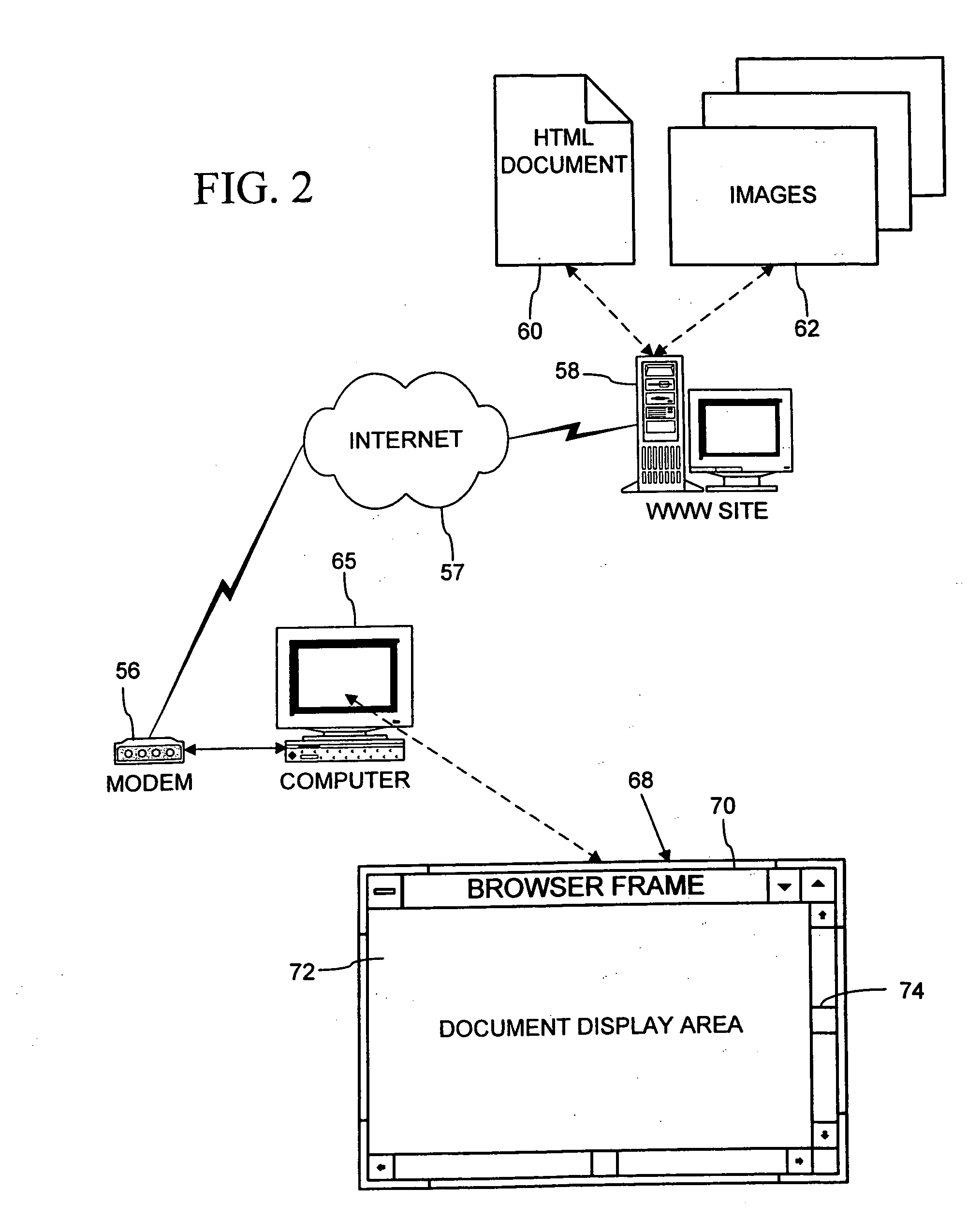Methods and systems for objects supporting structured language persistent state
a structured language and persistent state technology, applied in memory systems, program control, instruments, etc., can solve the problems of converting documents from one document format to another, finding a convenient way to create and edit html documents, and using these editors to edit html documents, so as to facilitate the conversion process, facilitate the conversion of new html extensions or enhancements, and reduce the size of embedded objects
- Summary
- Abstract
- Description
- Claims
- Application Information
AI Technical Summary
Benefits of technology
Problems solved by technology
Method used
Image
Examples
Embodiment Construction
The present invention is directed toward methods and systems for converting between a structured language element (e.g., an HTML element) and an embeddable object. In one embodiment, the invention is incorporated into a word processing application program entitled“Microsoft Word 97,” marketed by Microsoft Corporation of Redmond, Wash. Microsoft Word 97 provides a means for creating, editing, and saving documents in a word processing environment and includes a rich set of features such as WYSIWYG editing, spell checking, and an extensive on-line help facility.
Exemplary Operating Environment
FIG. 1 and the following discussion are intended to provide a brief, general description of a suitable computing environment in which the invention may be implemented. While the invention will be described in the general context of computer-executable instructions of a computer program that runs on a personal computer, those skilled in the art will recognize that the invention also may be implem...
PUM
 Login to View More
Login to View More Abstract
Description
Claims
Application Information
 Login to View More
Login to View More - R&D
- Intellectual Property
- Life Sciences
- Materials
- Tech Scout
- Unparalleled Data Quality
- Higher Quality Content
- 60% Fewer Hallucinations
Browse by: Latest US Patents, China's latest patents, Technical Efficacy Thesaurus, Application Domain, Technology Topic, Popular Technical Reports.
© 2025 PatSnap. All rights reserved.Legal|Privacy policy|Modern Slavery Act Transparency Statement|Sitemap|About US| Contact US: help@patsnap.com



